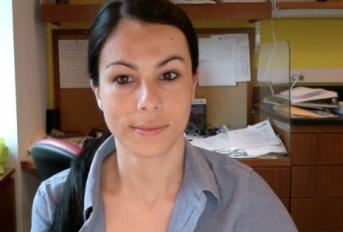Associação Portuguesa de Investigação em Cancro
Human Hematopoietic Stem Cells Expansion
Human Hematopoietic Stem Cells Expansion

In this study we identified a population of human mesenchymal stem cells capable of expanding the number of hematopoietic stem cells in laboratory. Hematopoietic stem cells reside in the bone marrow and are responsible for producing all the blood and immune cells necessary for survival. However, this group of cells is extremely rare, which limits their usage in clinical transplantations. This discovery opens the door to resolve situations where it is necessary to directly transplant hematopoietic stem cells in order to regenerate the entire blood system, as in leukemia or chronic anemia. This is also an important step to further understand of how human hematopoietic stem cells are regulated within the bone marrow microenvironment by “neighbor” cells.
Sandra Pinho 1,2, Julie Lacombe 1,2, Maher Hanoun 1,2, Toshihide Mizoguchi 1,2, Ingmar Bruns 1,2,4, Yuya Kunisaki 1,2, Paul S. Frenette 1,2,3
1-Ruth L. and David S. Gottesman Institute for Stem Cell and Regenerative Medicine Research;
2-Department of Cell Biology;
3-Department of Medicine, Albert Einstein College of Medicine, Bronx, NY 10461, USA;
4-Department of Hematology, Oncology and Clinical Immunology, Heinrich-Heine-University, Düsseldorf 40225, Germany
The intermediate filament protein Nestin labels populations of stem/progenitor cells, including self-renewing mesenchymal stem cells (MSCs), a major constituent of the hematopoietic stem cell niche. However, the intracellular location of Nestin prevents its use for prospective live cell isolation. Hence it is important to find surface markers specific for Nestin+ cells. Here, we show that the expression of PDGFRα and CD51 among CD45− Ter119− CD31− mouse bone marrow (BM) stromal cells characterizes a large fraction of Nestin+ cells, containing most CFU-F, mesenspheres, and self-renewal capacity after transplantation. The PDGFRα+ CD51+ subset of Nestin+ cells is also enriched in major HSC maintenance genes, supporting the notion that niche activity co-segregates with MSC activity. Furthermore, we show that PDGFRα+ CD51+ cells in the human fetal BM represent a small subset of CD146+ cells expressing Nestin and enriched for MSC and HSC niche activities. Importantly, cultured human PDGFRα+ CD51+ non-adherent mesenspheres can significantly expand multipotent hematopoietic progenitors able to engraft immunodeficient mice. These results thus indicate that the HSC niche is conserved between the murine and human species and suggest that highly purified non-adherent cultures of niche cells may represent a useful novel technology to culture human hematopoietic stem and progenitor cells.
The Journal of Experimental Medicine




